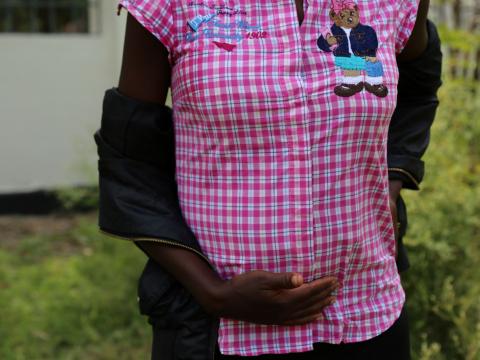Resilience: factors that help children adapt

Resilience is the outcome of successfully adapting to challenging life experiences through mental, emotional, and behavioural flexibility, and adjustment to external and internal demands. Resilience factors are protective factors in a child’s life, corresponding to being more resilient and having better health outcomes. The more protective factors are present, the better the chances for children to cope with hardships and adapt positively to difficult circumstances.
Factors that develop resilience
Protective experiences and coping skills counterbalance significant adversity in a child‘s life. Resilience is clear when a child’s health and development have positive outcomes, even when a heavy load of factors is stacked on negative outcomes. Children become resilient when the effect of protective factors outweighs risk factors. Factors that are important to develop resilience are grouped into three general categories namely:
Family factors
These are factors related to good parenting, low family stress, sound parental mental health, absence of substance abuse, and a sense of safety in the family unit.

Individual factors
An individual needs to have adaptive emotional skills, perception of control, ability to affect own life, self-esteem and self-efficacy, sense of purpose, acquisition of social and communication skills, empathy, a sense of humour, higher intellectual capacity and cognitive competencies.
SEE ALSO: Developmental milestones: what you should know
Community factors
Human beings exist in a community. Factors related to community are also essential in resilience development in children. A community with supportive extended family members’ engagement, supportive relationships with mentors, positive early years experiences and exposure to extracurricular activities, a safe neighbourhood, presence of social support, and being part of a religious community are important elements in promoting children’s resilience.
Protective factors that promote children’s resilience
Despite facing difficulties, many children display well-being and positive change. Emerging research continues to examine what protective factors promote children’s resilience and how they can support prevention and intervention efforts for children and their families. Here are some of the protective factors within individuals, families, and their communities.
Presence of a loving and supportive adult
Research suggests that the single most common factor in how children overcome adversity in life is having at least one loving, consistent, and supportive parent. Children benefit when we recognize and preserve important connections that provide them with nurturing and security.
Positive self-perceptions
Self-perception refers to how children think about themselves, their skills and capabilities, and their sense of control. Positive self-perceptions can be nurtured by recognizing children’s efforts, supporting them in setting short-term goals, and assisting them to learn from setbacks.
Self-regulation skills
Self-regulation skills enable children to manage their thoughts, emotions, and behaviours when they feel overwhelmed, frustrated, and anxious. Parents need to scaffold and support their children by helping them navigate difficult situations through a process until they can handle challenges on their own.
Connection to faith and culture
Having a connection to faith and culture is important to children in their early years. Children who are involved in cultural or faith groups may be better positioned to navigate adversity since they benefit from the support of a network of people who share similar values and beliefs with positive messages conveyed by spiritual, cultural, or religious traditions helping children overcome difficulties.

Parenting competencies
Parents need to have competencies, such as responding to children’s needs, expressing emotional warmth, providing support, and building strong parent-child attachment and bonding. Research shows that parenting competencies are well linked to better outcomes for children exposed to adversity and trauma. Depending on the parenting style, used children may benefit and develop resilience.
Mother’s well being
The well-being of the mother plays a critical role in building resilience. Children whose mothers experience positive mental health display increased resilience and better outcomes than those others exposed to adversity. Ensuring the promotion of health and well-being of mothers is important to support children in building resilience.

Positive home/school environment
How children respond to protective factors depends on many interacting influences in the child’s, family, and community environments. Promoting these protective factors can help build children’s resilience and support their well-being and health. Schools can support children to believe in their abilities to achieve and provide them with intellectual and emotional tools. Children’s mental health and well-being can be further strengthened when schools incorporate social-emotional learning approaches.
Conclusion
Understanding why some children do well despite adverse early experiences is crucial, to inform policies and programs to help more children exploit their full potential and reduce the effects of significant adversity on children’s healthy development. Parents play a big role in helping children learn to adapt and thrive in the face of adversity through strengthening protective factors.
Grab the latest issue of Parents Magazine Here
The article was written by Dr. Catherine Gichuba, CEO and Lead Consultant at Regional Social Consultants Agency (RESCA).







